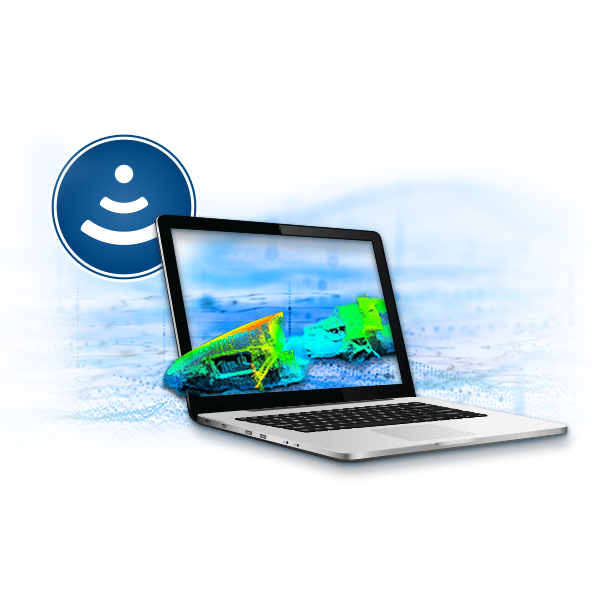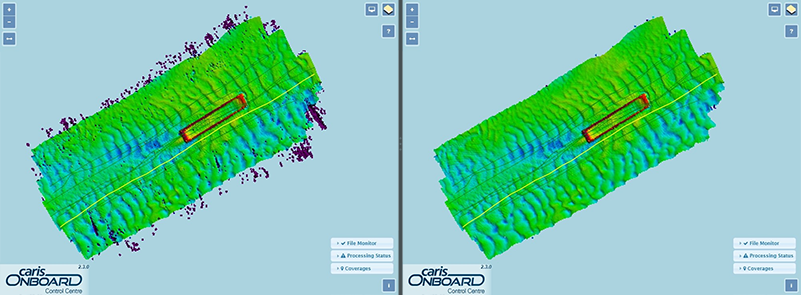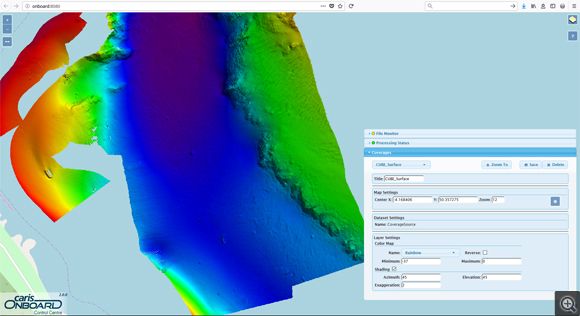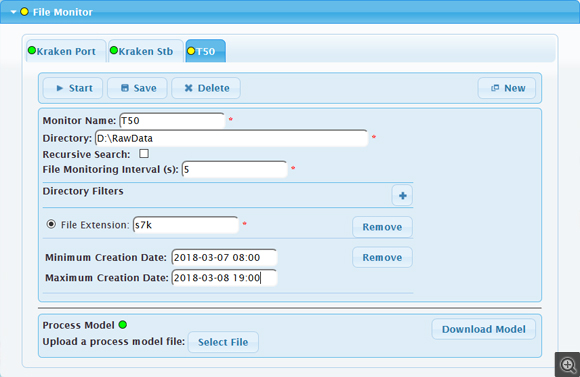Feb 27
2020
Introducing CARIS Mira AI
The Teledyne CARIS team is committed to leveraging the latest technology for our customers with the creation of the CARIS Mira AI platform.
CARIS Mira AI is a new cloud-based platform to host our current and future AI solutions. Backed by Amazon Web Services (AWS), offering a robust, scalable cloud platform means no additional desktop hardware is required to move users into the future of processing.
With these evolving technologies, our AWS-certified team is focused on the safety and security of your data while it's in our care: all data directed to the CARIS Mira AI platform is anonymized, randomized and encrypted before transmission. For additional security, no data remains stored on the cloud following the AI classification process.
AI technologies and cloud services are the new force multiplier to reduce Ping-to-Chart times. Let CARIS future-proof your processing pipeline.
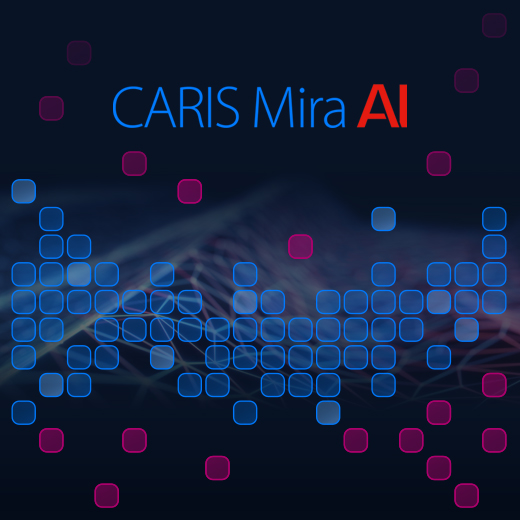
Sonar Noise Classifier
We invite you to bring the noise with the first CARIS Mira AI offering, the Sonar Noise Classifier!
CARIS seeks to significantly reduce the need for manual cleaning and move your data swiftly from acquisition to review. The Sonar Noise Classifier automatically identifies the vast majority of sonar noise, resulting in a reduction of manual cleaning effort by a factor of up to 10x at an accuracy of 95%.
The Sonar Noise Classifier is trained to identify a variety of noise patterns from acoustic sensors. The algorithm assigns confidence values for all soundings on a scale of 0 to 100% with 100% indicating the classifier's highest confidence that the sounding is noise. Soundings can be rejected while running the Sonar Noise Classifier by setting your confidence threshold value.
By leveraging the Sonar Noise Classifier during the survey through CARIS Onboard, raw sonar data is fully processed, cleaned and put into a final product, autonomously and in realtime. The powerful combination of Onboard and the Sonar Noise Classifier allows the possibility of having a processed and cleaned dataset by the time your survey is finished, allowing the final quality review efforts to be substantially reduced.
Allow us to help you tackle your data backlog save your personnel for the tasks a machine cannot do.
Choose to purchase access to the Sonar Noise Classifier service on a yearly, or month by month subscription basis for a customized software solution to meet processing needs. CARIS invites you to try it for yourself with a free 30 day trial.
Aug 28
2019
Automatic Extents
To help improve the Onboard user experience, CARIS has implemented the most commonly requested feature in the release of Onboard 2.2, automatic extents. With this new workflow you no longer need to define extents prior to the creation of a surface or mosaic. During a survey the new CSAR format will allow the extents to automatically adjust to the incoming data as it is added to the coverage, which means the surface will always contain all processed data, without needing to manually adjust the process model between surveys.
Note: If a coverage is created with fixed extents, the CSAR file is fully backwards compatible. However, if you need to use an automatic extents CSAR in previous versions of CARIS software, use the right click→ 'Save As' on the coverage in the Onboard Viewer application to create a fixed extent copy once all data has been added to the coverage.
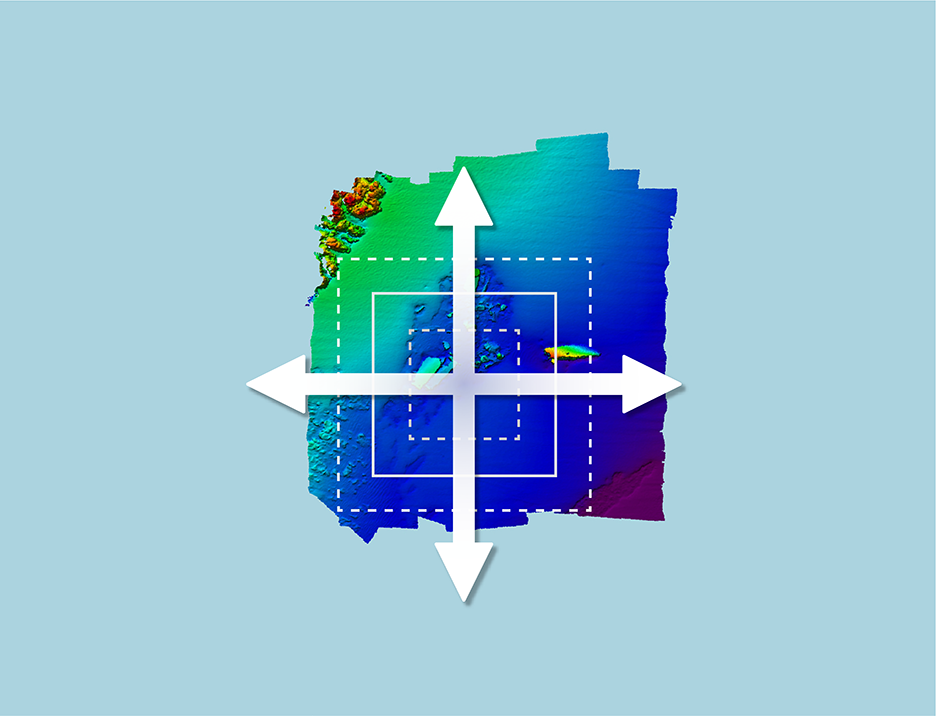 While setting up a process model for Onboard, the Extents option is no longer required, and the surface extents will automatically update to match the incoming data
While setting up a process model for Onboard, the Extents option is no longer required, and the surface extents will automatically update to match the incoming data
SIPS Backscatter
Following the release of the new SIPS Backscatter engine with WMA gridding with area-based AVG in HIPS and SIPS™ 11.2, the new Backscatter engine is now available in CARIS Onboard 2.2. The new engine implements a weighted moving average (WMA) gridding technique which better handles the geometry of multi-sector systems, prevents over-interpolation of data, and allows smoothing the mosaic by adjusting the radius of influence for each cell. Along with the WMA gridding engine, an industry-first area-based AVG correction is also introduced which uses information from overlapping lines during the AVG computation to ensure consistent corrections are applied across the mosaic. Releasing the new backscatter engine in Onboard 2.2 will allow high quality backscatter mosaics to be automatically produced on the vessel during the survey.
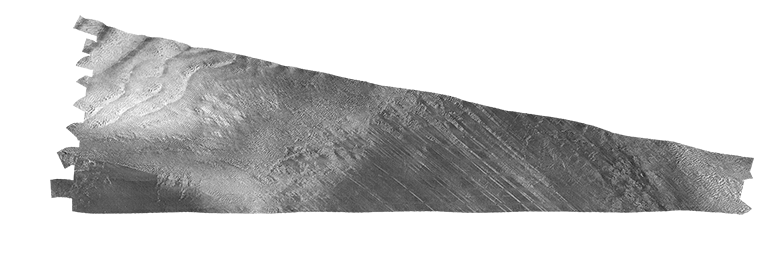
Reson T-50 Normalized Backscatter Imagery Source: Environment Agency
Mar 18
2019
Scalable Bandwidth
The release of CARIS Onboard 2.1 includes a new way to connect to the Onboard Service with the release of Control Centre Lite. Control Centre is a streamlined interface for controlling and monitoring automated data processing, and is centered around a live updating web-map streaming processed data for real-time and remote quality control. As the new addition, Control Centre Lite provides all of the same tools, however it is designed to perform better in low bandwidth situations by only updating the web-map when the user requests it. With this extension to Control Centre, the surveyor has control over when data is or is not transferred, providing capabilities to review data during moments of optimal bandwidth availability.
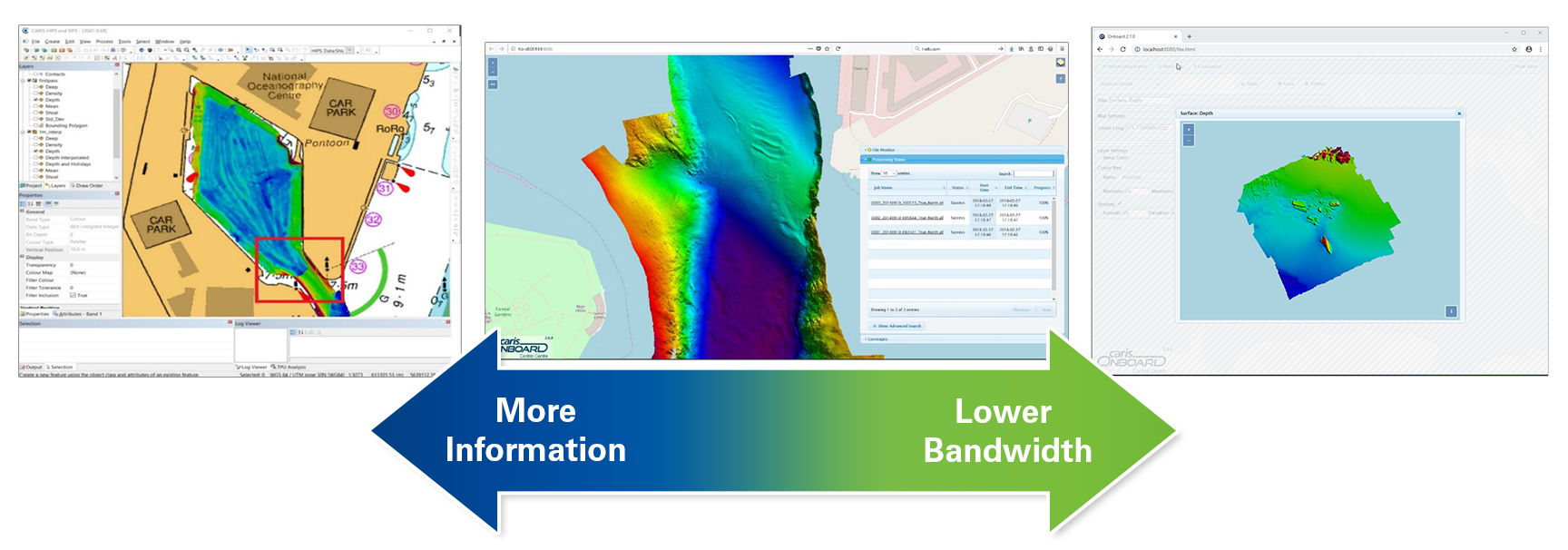
Combining the three methods of connecting to the live processed surface from Onboard,(through the CARIS application, Control Centre, and Control Centre Lite), the surveyor has the ability to scale the amount and frequency of information, to match the amount of bandwidth available to use at any point during operations. This ensures that the surveyor is able to have a clear representation of how operations are progressing. This ensures survey operations are efficiently managed and any issues which may arise are identified at the time they happen, not after the survey is complete, when it is too late to make corrections.
Standalone Capability
The release also includes the new application "Onboard Viewer". Onboard Viewer is installed along with CARIS Onboard providing a much improved user interface for configuring the Onboard service, including tools for setting the license and setting the environment for Onboard. The Onboard Viewer also provides the HIPS Vessel, Tide and SVP Editors and provides a platform for connecting to the Onboard Service with the ability to open background files.
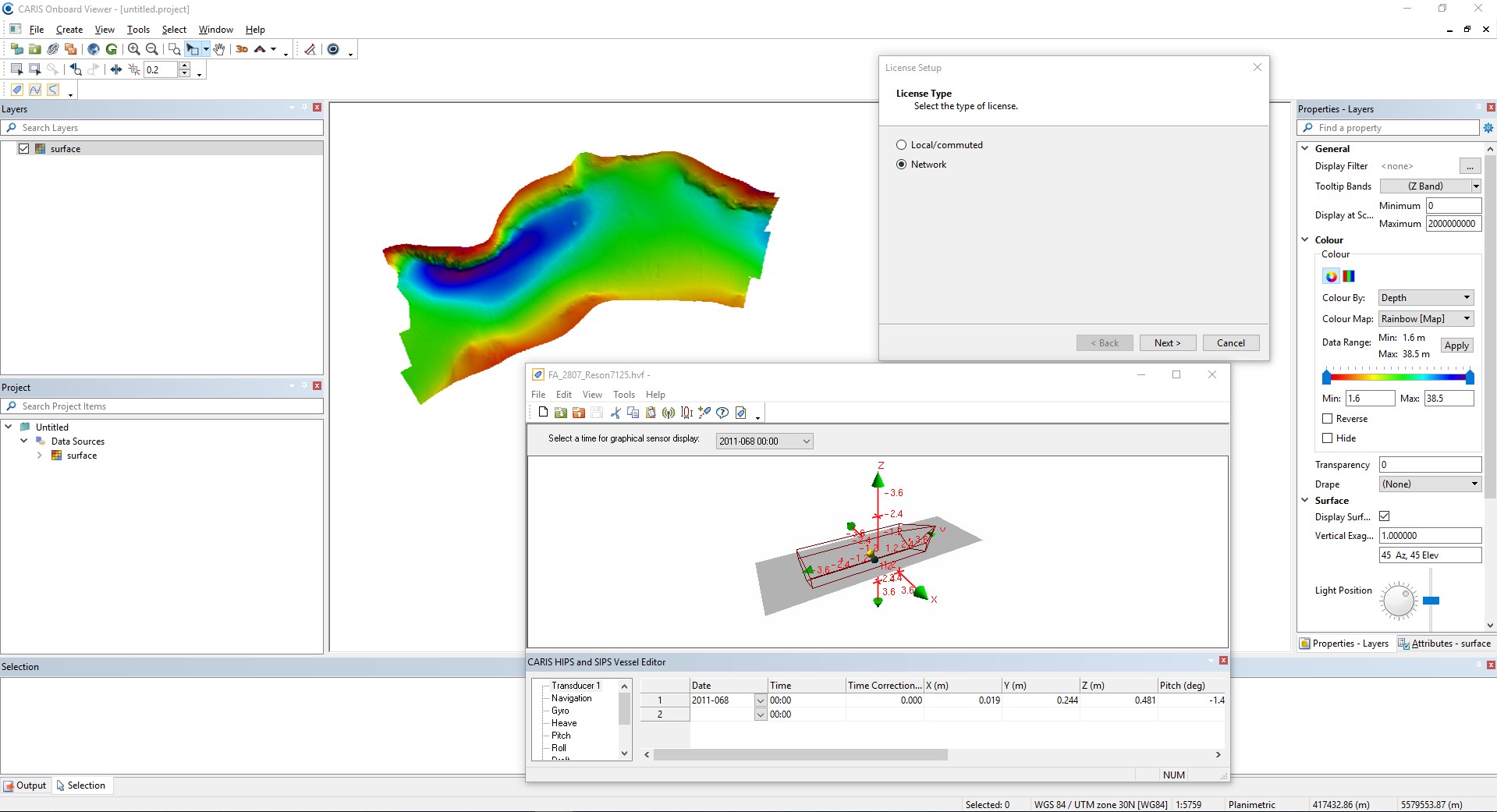
When combined with recently released processes for exporting processed data to interchange formats such as GSF and ASCII, the addition of Onboard Viewer now allows CARIS Onboard to operate independent of any other post processing software. The installation of CARIS Onboard now includes all tools required to configure a data processing workflow, process raw data live on the survey platform, and export the full resolution processed data or generated products to a variety of interchange formats for use in any other software package. With this new capability CARIS Onboard can bring the benefits of automated processing and remote QC to any processing workflow.
New Licensing Technology
CARIS Onboard 2.1 incorporates new licensing technology which will bring several benefits to our end users. Please note that the new license technology is not compatible with previous versions of the software, and your existing license configuration is still required for those versions. Please contact Teledyne CARIS customer support to receive your new license.
This upgraded licensing is softkey based, so no physical dongles are required; a license Entitlement will be created for software activation. This presents several benefits:
- Convenient and easy activation (online or offline)
- No separate licensing tool
- Faster software purchase and setup
- The elimination of physical hardware removes the possibility of damage or loss
For more information about the new licensing technology and how it will affect your organization contact Customer Services, or visit License FAQ.
Mar 13
2018
New Control Centre
Expanding on the previous capability of managing CARIS Onboard's automated data processing, Control Centre has been redesigned to be focused around a modern web map. The products generated by CARIS Onboard, including surfaces, backscatter mosaics, and the survey lines are live-streamed during acquisition into a web map which can be accessed through a web browser. In the same window, Control Centre also has dynamic controls for controlling and monitoring CARIS Onboard's automated data processing. By providing access to processed products in a web map, the new Control Centre allows review of the coverage and quality of a survey from any device with a network connection to the vessel. This increased access allows information about survey operations to be accessed when and where it is needed.
Through Control Centre the survey lines can also be viewed, assisting in quality control and feature investigations. When clicking on a survey line in Control Centre, the name of the line is displayed along with its minimum and maximum time.
Improved File Monitor
CARIS Onboard 2.0 also introduces several improvements to the File Monitor, with support for multiple sensors and advance filters to provide more control over which files are processed.
Control Centre now provides the ability to create up to four File Monitors, each with a unique filter and a unique Process Model. This allows a single installation of CARIS Onboard to simultaneously process the data from all the sensors on your survey platform.
Advanced filters are now available, providing better control over which files are processed. Filters are available based on file extension, file creation time (min/max), file size (min/max) as well as the ability to use regular expressions.
Simplified Installation
The installation of CARIS Onboard has been redesigned to allow for a simple installation and configuration procedure. As part of the simplification process, the server environment is built into the CARIS Onboard installation allowing all components to be installed with a single executable. A default environment is deployed with CARIS Onboard, so no configuration is required for most common installations. For the installations which vary from the default, all settings are now updated in a single easy-to-edit file.
Process Improvements
Several processes used with CARIS Onboard have been upgraded to improve upon their ease of use and provide better automation capabilities.
The Sound Velocity Correction process has been updated to allow users to select folders containing multiple SVP files and all files will be read and applied to the lines being processed. This will allow the most up-to-date profiles to be applied during processing, without any extra user interaction.
All processes used by CARIS Onboard have now been updated to not require a vessel file. For the most common sonar formats, the vessel parameters will be automatically read from the raw data files and applied during processing.
Process Designer
Process Designer has several usability updates to make it easier to design and validate a processing workflow. These updates include applying a modern design which makes it easier and more intuitive to interact with the application and design a Process Model
It is now possible to include a Process Model inside another Process Model using File > Insert Model. This makes it easier to manage complex Process Designer models by defining common capability once and re-using it multiple times. In the example below, a Process Model for Creating or Updating a Surface has been inserted into the main Process Model, which is clearly identified by its teal colour.
Validation has been built into the Process Designer, making it clear to a user if they have not defined a required parameter or connection. In the example below, the process is showing that it requires a connection for the "Track Line(s)" input.
